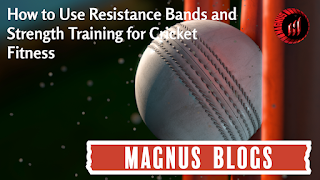How to Use Resistance Bands and Strength Training for Cricket Fitness
.png)
Cricket is a game that requires a combination of strength, endurance, flexibility, and agility. Whether you are a batsman, bowler, or all-rounder, developing your core strength, explosive power, and muscle endurance can significantly improve your performance on the field. Resistance bands and strength training are excellent tools for cricket-specific fitness. They help enhance batting power, bowling speed, running endurance, and injury prevention. In this guide, we will cover the benefits of resistance bands and strength training, key exercises, and how to integrate them into your cricket fitness routine. Why Strength Training and Resistance Bands Are Essential for Cricketers Strength training and resistance bands help cricketers in multiple ways: Improves Batting Power – Stronger arms, shoulders, and core muscles help generate more power in shots. Enhances Bowling Speed & Control – Strengthening the shoulders, legs, and core leads to better bowling performance. Incre...
.png)
.png)
.png)
.png)
.png)
.png)